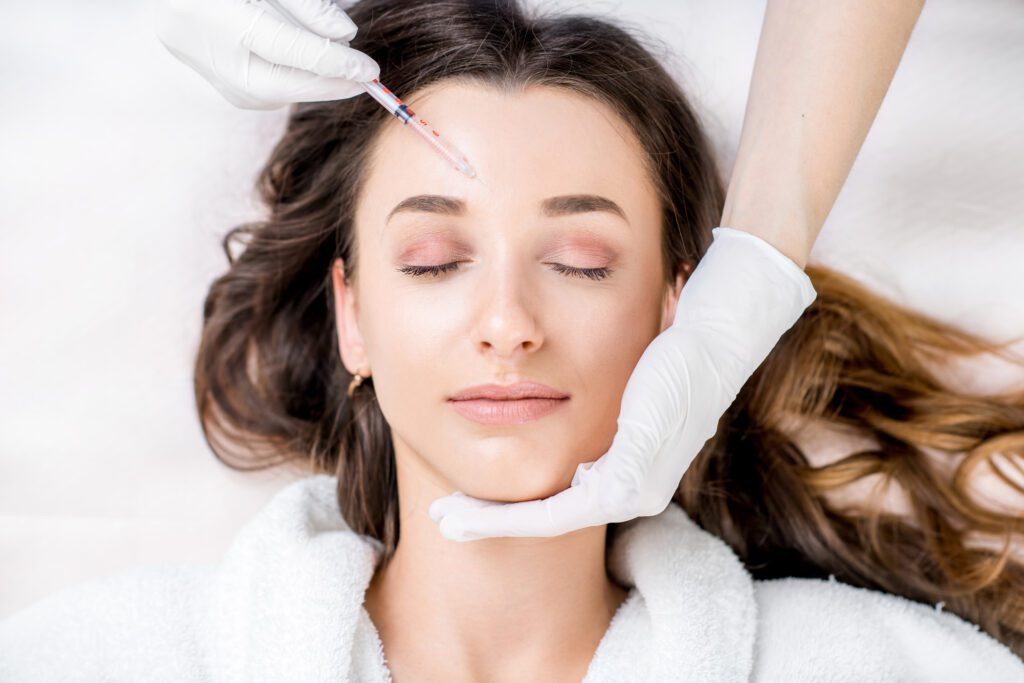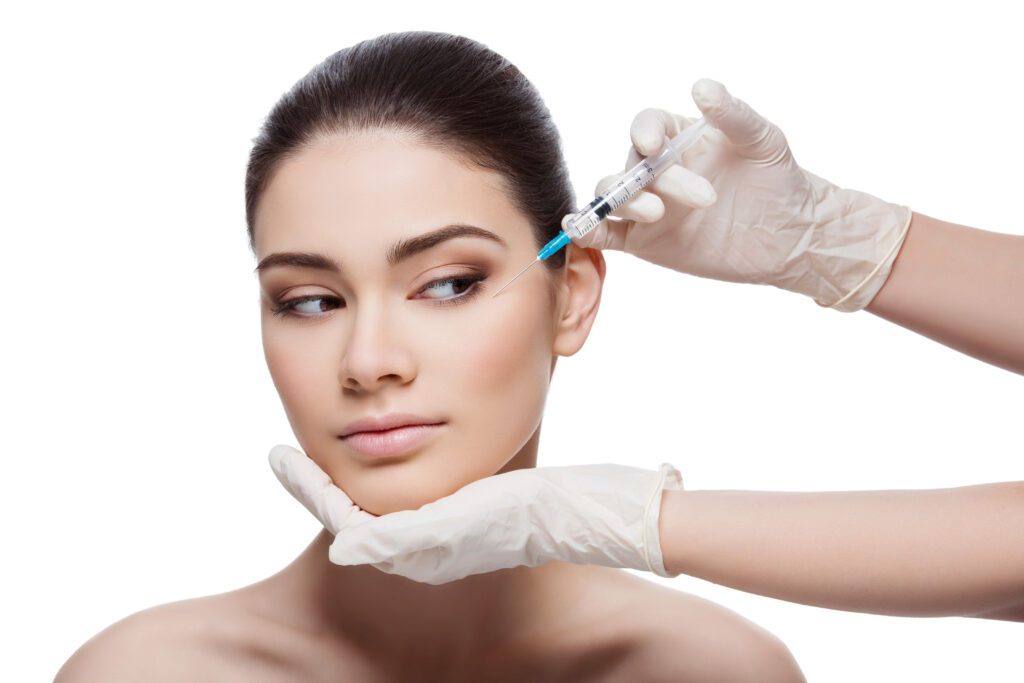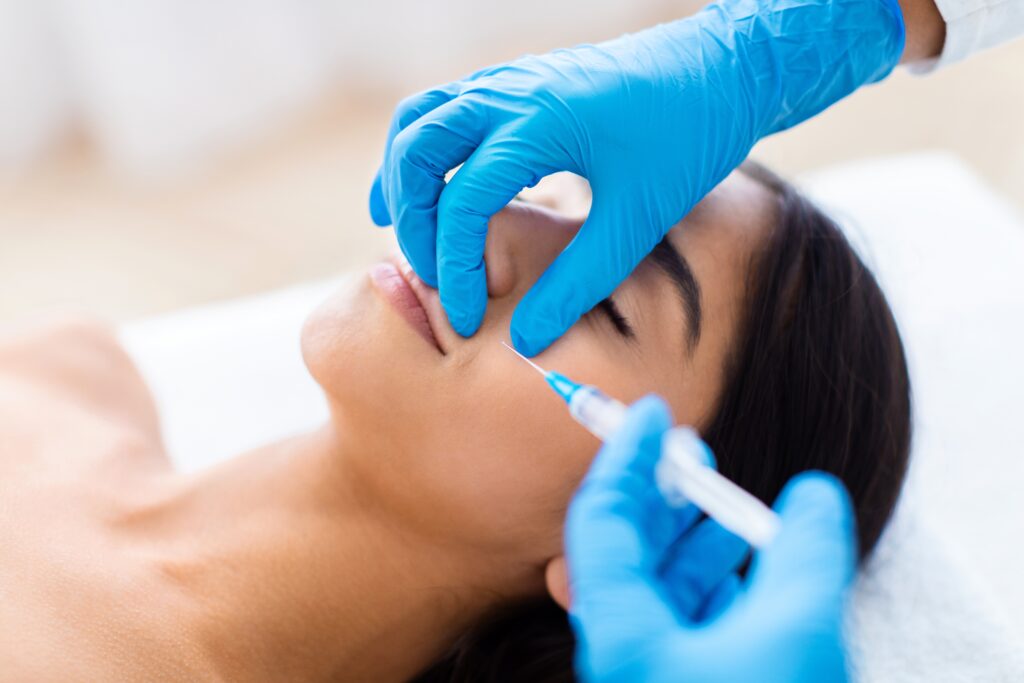
Facial asymmetry is a common concern that many individuals experience. While slight differences in facial features are entirely normal, more pronounced imbalances can affect a person’s self-confidence and overall appearance. Fortunately, advancements in the field of aesthetic medicine have paved the way for noninvasive procedures, such as Botox®, to address facial asymmetry effectively.
Let’s look at how Botox® can help patients address facial symmetry issues as well as what to expect from this type of Botox® treatment.
Understanding Facial Asymmetry
Technically speaking, facial asymmetry is present in anyone whose facial features do not line up exactly to create a mirror image. Most people have some degree of natural facial asymmetry; however, for others, especially those with certain health conditions, facial asymmetry is more pronounced. Aging can also cause natural facial asymmetry to become more noticeable and problematic.
Common types of facial asymmetry include eye displacement, lowered eyebrows, forehead protrusions, cheek retrusion, and nasal deviation. Depending on its severity, it’s possible for individuals to correct facial asymmetry in a few ways, including Botox®, which offers a safe and non-surgical pathway to a more symmetrical face.
Role of Botox®
When trying to fix facial asymmetry, Botox® offers a unique solution because of how it works. Botox® or botulinum toxin A, is an FDA-approved injectable neurotoxin that works to block certain neurotransmitters and relax muscles. When injected into key areas of the face, Botox® can help reshape one’s appearance and correct facial asymmetry by relaxing muscles on one side of the face so it more closely resembles the other side.
Benefits of Correcting Facial Asymmetry with Botox®
Botox® has produced impressive aesthetic results for patients since it was first FDA-approved for cosmetic use in 2002. Most commonly used to treat wrinkles around the eyes and forehead, Botox® also works to improve facial asymmetry, allowing practitioners to better balance areas of the face, such as the brow or chin, through targeted muscle relaxation. Botox® can also work to correct asymmetry in the lower areas of the face, especially when combined with other treatments, such as cheek and chin fillers.
Patients interested in using Botox® to treat their facial asymmetry are in good company, as more than 4 million Americans, on average, receive Botox® treatments for cosmetic reasons each year. However, it is still important to be prepared before undergoing Botox® treatment for facial asymmetry. Let’s take a look at what to expect during the process.
Preparing for Botox® Injections
For those who have never had Botox® treatments, it is common to feel nervous, but, unlike surgery, there is not much you need to do to prepare, other than a take a few basic precautions. For example, do not get a facial or chemical peel within one week before undergoing a Botox® procedure. It is also best not to take any anti-inflammatory medications or consume alcohol for about 48 hours before your appointment to help minimize bruising.
Botox® Injection Process
The Botox® injection process is simple, quick, and relatively painless. If requested, your practitioner may apply some topical numbing cream to the area(s) where they will inject the Botox®. Once the cream takes effect, they will clean and sanitize the area and begin the injection process. Injections are usually no more uncomfortable than a mild pinch, and they generally take no more than 20 minutes to complete. Results should be apparent within about three to seven days and should last about three to five months.
Post-Treatment Care
Botox® is such a safe treatment option that it requires absolutely no downtime following the procedure. However, most practitioners recommend avoiding vigorous exercise and sun exposure for at least 24 hours following treatment. They also suggest that you avoid touching your face at or near the area(s) of injection for the same amount of time.
Potential Risks of Botox® Injections
The most common risks associated with any Botox® procedure are swelling and bruising around the injection site(s). These are easily mitigated, however, with proper aftercare. As with any injection, there is also a risk of infection, and Botox® can also cause facial asymmetry if it is not properly applied. This is why it is so important to make sure you go to an experienced, reliable med spa for Botox® treatment.
H2: Learn More About Botox® Treatment for Facial Asymmetry at The Rejuva Center
The Rejuva Center at Williams in Albany, NY, has been treating patients with Botox® since it opened its doors in 1999. As a top medical spa, we specialize in treating patients individually and are ready to design unique treatment plans to address their needs and budgets. Call or schedule a Botox® appointment today to learn more options for using Botox® and other products to address facial asymmetry at The Rejuva Center.
Recent Posts

Reversing Smoking Damage to Your Skin
Smoking can cause significant skin damage, affecting both overall skin health and its appearance. However, smoking damage can be severe, but there are ways to reverse skin damage caused by…

Balancing Holistic Practices with Cosmetic Treatments
A holistic approach to beauty, including focusing on lifestyle, nutrition, and mental well-being, contributes to skin health as well as general healthiness. Combining holistic practices like these with the non-surgical…

Xeomin vs. Dysport vs. Botox Injections
Xeomin®, Dysport®, and Botox® are all injectable treatments that belong to a class of medications called neuromodulators that use the same main ingredient, botulinum toxin type A. When used for…

A Complete Guide to the Cosmetic Treatment Process: Start to Finish
Non-surgical cosmetic treatments are a great way to revive your look in a safe and effective manner, without the risks associated with surgery. Since 1999, The Rejuva Center at Williams…
